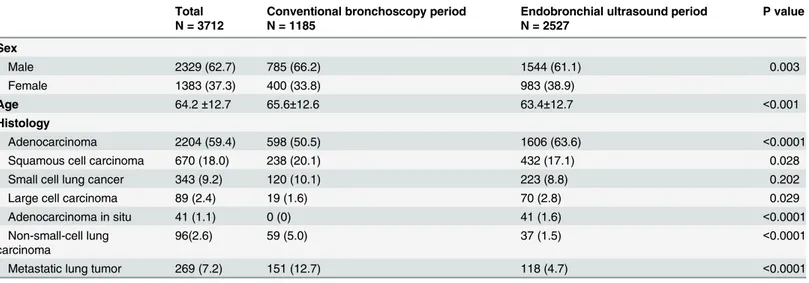Endobronchial Ultrasound Changed the World of Lung Cancer Patients: A 11-Year Institutional Experience.
Texto
Imagem



Documentos relacionados
The aim of this study was to evaluate the efficacy and cost of linear endobronchial (EBUS) and endoscopic ultrasound (EUS) guided fine needle aspiration (FNA), performed with
Suitability of endobronchial ultrasound-guided transbronchial needle aspiration specimens for subtyping and genotyping of non-small cell lung cancer: a multicenter
Endobronchial ultrasound-guided transbronchial needle aspiration was indicated for diagnosis and/or staging of lung cancer in 52% of cases, suspected recurrence of
Objetivo: Endobronchial ultrasound-guided transbronchial needle aspiration (EBUS-TBNA, punção aspirativa por agulha guiada por ultrassom endobrônquico) é um método novo em
Rapid On-Site Cytologic Evaluation During Endobronchial Ultrasound-Guided Transbronchial Needle Aspiration for Nodal Staging in Patients With Lung Cancer. Ann
Endobronchial ultrasound-guided transbronchial needle aspiration (EBUS-TBNA, punção aspirativa por agulha guiada por ultrassom endobrônquico) tem desempenhado um papel fundamental
Endobronchial ultrasound-guided transbronchial needle aspiration (EBUS-TBNA) has played a key role in the diagnosis of mediastinal, paratracheal, and peribronchial lesions, as well
Endobronchial ultrasound-guided transbronchial needle aspiration (EBUS-TBNA), a minimally invasive method, has been shown to be safe and accurate for collecting samples